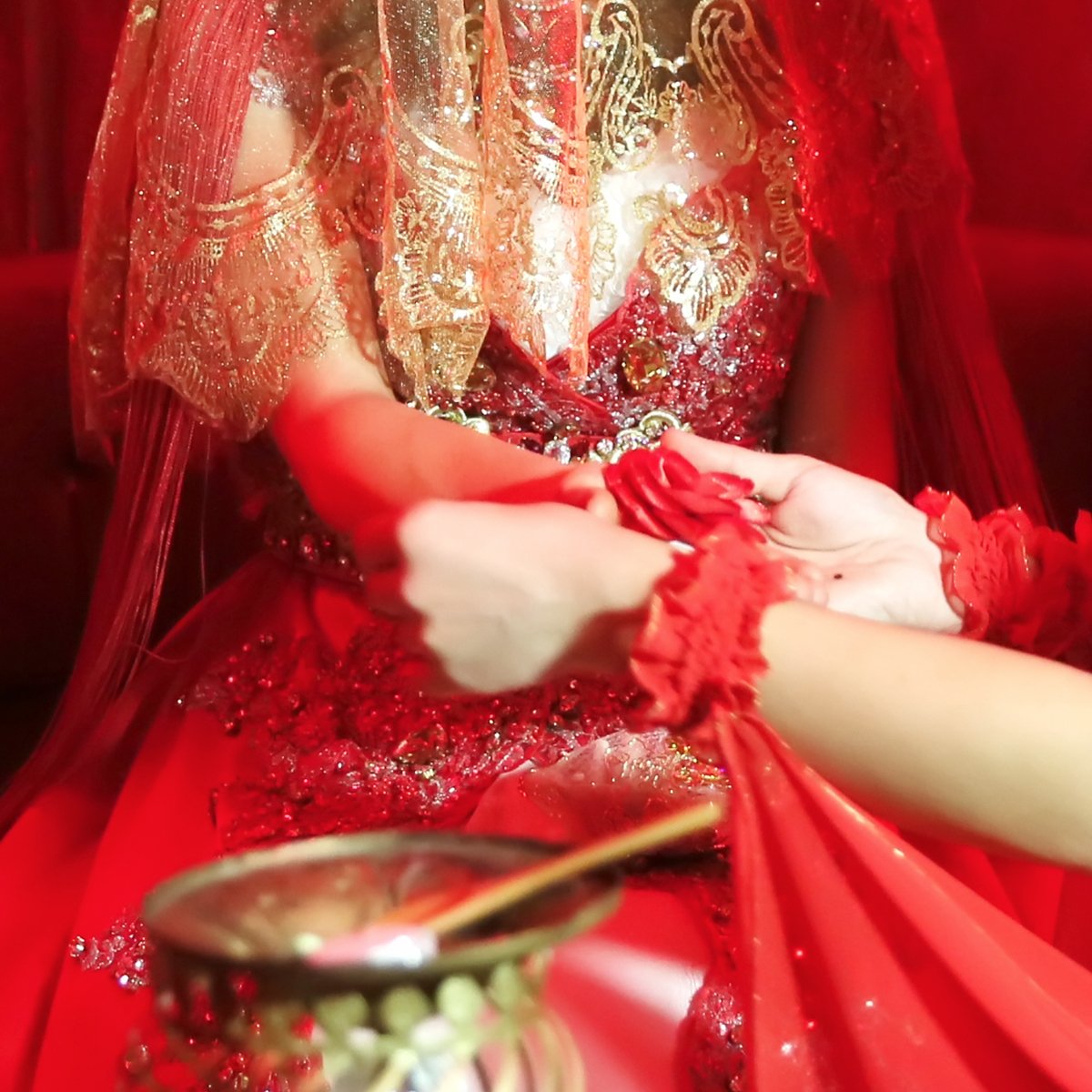DİFFERENT TURKİSH TRADITIONS/FARKLI TÜRK GELENEKLERİ
ALLAR BAĞLAMAK
Eşiklerin “en sancılısıdır” doğum. Hem bebek için hem anne için “eşik”tir. Yeni durum, 9 ay anne karnında yaşayan bebeğin de, annenin de ezberini bozar. Bebek, farkında olmadığı yeni yaşamına baş aşağı tutulup ağlatılarak başlarken, anne, loğusa ve kırklı çocukları öldürdüğü varsayılan “Al Karısı”nın kötülüklerine uğramamak için kırmızılar bağlar.
CONNECT RED
It is the “most painful” birth of the threshold. It is the “threshold Hem for both the baby and the mother. The new situation disrupts the memorization of both the mother and the baby living in the womb for 9 months. While the baby starts his new life unaware of his life by being upside down and crying, he binds the reds in order not to suffer the wickedness of “Al Wife varsayılan, who is assumed to have killed the mother, maternity and forty children.

GÖBEK ADI KOYMAK
İlk ritüel anne ile bebeği birbirine bağlayan göbek kordonunun kesilmesinde yaşanır. Orta Karadeniz Bölgesi başta olmak üzere Anadolu’nun bazı yerlerinde, “Sesi az çıksın, kocasının karşısında çok konuşmasın” diye kısa kesilir kız bebeğin göbek kordonu. Bazı kültürlerde ise oğlanın göbeğinin kısa kesilmesi halinde sesinin kız gibi ince olacağına inanılır. Göbek kordonu kesilirken bir de “göbek adı” konulur bebeğe. Kişinin kabirde bu adıyla çağrılacağına inanıldığı için bu ad, çoğunlukla Kuran’dan seçilir. Ardından, sağ kulağına ezan okunur.
Navel
The first ritual occurs when the umbilical cord which connects the mother and the baby is cut. In some parts of Anatolia, especially in the Central Black Sea Region, the baby's umbilical cord, "her voice should be less, do not speak much in front of her husband" cut short. In some cultures, it is believed that if the boy's belly is cut short, his voice will be as thin as a girl. When the umbilical cord is cut, a “middle name” is placed on the baby. This name is often chosen from the Qur'an because it is believed that the person will be called in the tomb by this name. Then, prayer is read in his right ear.

KORDON SAKLAMAK
Bebeğin karnı doymaya başlayınca, göbek bağının da düşeceğine inanılır. 4-7 gün arasında düşen göbek bağı itinayla bir yerde saklanır. Kimi, “Gezgin olmasın, dışarıya çok gitmesin” diye 1-2 sene beşiğine asılı tutar göbek bağını; kimi “Okusun, büyük adam olsun” diye okul bahçesine, kimisi de “Devlete hayrı dokunsun, devlet adamı olsun” diye devlet dairelerinin avlusuna gömer.
STORAGE CORD
It is believed that when the baby starts to saturate, the umbilical cord will fall. The umbilical cord that falls between 4-7 days is carefully stored in a place. Some, "Do not be a traveler, do not go out too" he hangs the cradle for 1-2 years hangs the umbilical cord; some “Let him read, be a great man” he buries in the school yard and some kim Let the state touch the good, statesman adamı he buries in the courtyard of the government offices.
HAMİLE KADINLAR BUNLARA İNANIYOR
Hamile kadın ayıya, maymuna, deveye bakmaz, çocuk çirkin olur.
Cenazeye gitmez, cesede bakmaz; yüzü renksiz olur.
Canı ne isterse onu yemelidir; yemezse çocuğun herhangi bir yerinde iz çıkar.
Sakız çiğnemez, çiğnerse çocuk çişli olur veya ağzı çok akar.
Kelle eti yemez, yerse çocuk sümüklü olur.
Hamile kadın ve kocası yılan öldürmez, öldürürse çocuk sakat olur.
Hamile kadın habersiz kimsenin bir şeyini alıp yemez, çocuk hırsız olur.
Hamile kadın diş çektirmez, çocuğu düşer; saç kestirmez, çocuğun ömrü kısa olur.
Ekşi yerse kız, tatlı yerse oğlan doğurur. “Ye ekşiyi doğur Ayşe’yi, ye tatlıyı doğur atlıyı” denir.
Kız doğuracağı zaman çirkinleşir, oğlan doğuracağı zaman güzelleşir. “Kız kendini, oğlan anayı süsler” derler.
Kadın doğuma giderken, doğum rahat olsun diye, evdeki tüm kilitler açılır. Doğacak çocuğa hazırlanan giysilerin düğmeleri de açık bırakılır.
Karnında çocuğu durmayan kadın; çocuk doğana kadar ve doğduktan sonra bir yaşına gelene kadar gece lambayı hiç söndürmez.
PREGNANT WOMEN BELIEVE IN THEM
Pregnant woman does not look at bear, monkey, camel, child becomes ugly.
He doesn't go to the funeral, he doesn't look at the body; face becomes colorless.
He must eat whatever he wants; If it does not eat, the child will be scarred anywhere.
The chewing gum doesn't chew, if it chews the child will be pissed or the mouth will flow too much.
He doesn't eat meat, but if he eats, the child becomes a snot.
The pregnant woman and her husband do not kill the snake;
Pregnant woman does not take anything and eat unannounced, the child becomes a thief.
Pregnant woman does not pull teeth, the child falls; hair does not cut, the child's life is short.
If she eats sour, she gives birth to a boy if she eats sweet. It is called “Eat Ayşi, eat sweet and give horses“.
When she gives birth, she becomes ugly, and when she gives birth, she becomes beautiful. They say, “The girl adorns herself and the boy's mother”.
When the woman goes to labor, all the locks in the house are opened so that the birth is comfortable. The buttons of the clothes prepared for the child to be born are also left open.
Woman with unborn child; The child does not turn off the lamp at all until the child is born and until one year after birth.

ÇOCUĞUN ÖMRÜ, YUMURTA SARISIYLA HESAPLANIR
İç Anadolu ve Karadeniz bölgesinin özelliklerini taşıyan Çorum’da doğan bebeğin ömrü ise yumurtanın sarısından anlaşılıyor. Bebeğin kırklanması sırasında beşiğinin altına yumurta kırılıyor. Bir gün boyunca beşik altında kalan yumurtanın sarısı, ertesi gün bakıldığında dağılmamışsa bebeğin “uzun ömürlü” olacağına inanılıyor.
THE LIFE OF THE CHILD IS CALCULATED WITH EGG YELLOW
The life of the baby born in Çorum, which has the characteristics of Central Anatolia and the Black Sea region, is understood from the yolk of the egg. Egg is broken under the cradle during the baby's shaking. It is believed that if the yolk of the egg, which remains under the cradle for a day, is not dispersed when viewed the next day, the baby will be “long-lasting..

İKİ BAYRAM ARASI DÜĞÜN YAPILMAZ
Türklerin dini bayramlarından olan Ramazan bayramı ve Kurban bayramı tarihleri arasında düğün yapılması uğursuzluk olarak sayılır ve düğün tarihleri asla bu iki bayram arasına denk getirilmez.
NO WEDDING BETWEEN TWO HOLIDAYS
A wedding between the dates of Ramadan and Sacrifice, which is one of the religious holidays of the Turks, is considered to be bad luck and the dates of the wedding are never brought between these two festivals.

Türklerin Düğün Gelenekleri
Düğünden önce damadın gelini görememesi,
Baba evinden çıkacak olan gelinin beline, kırmızı kuşak bağlanması,
Gelini almaya gelen damada gelinin gösterilmemesi ve kapının açılması için bahşiş alınması,
Geline kına yakılması gibi birçok farklı geleneksel öğe bulunmaktadır.
Damadın yanına “SAĞDIÇ” (Bayraktar) tutulur. Genellikle mehel (uygun) gördüğü akrabası seçilir. Sağdıçlık yapacak kişi genç ve bekar olmalıdır.
Damat ve Sağdıça düğün esnasında “AL-YEŞİL” ipekten örtü çapraz olarak bağlanır (AL=Hz Hüseyin’i, YEŞİL=Hz Hasan’ı temsil eder)
Wedding Traditions of Turks
Inability to see the bride before the wedding,
A red belt is tied around the waist of the bride who will leave her father's house.
The bride coming to the bride not to show the bride and tip for opening the door,
There are many different traditional items such as henna burning to the bride.
“Sağdıç” (Bayraktar) is kept next to the groom. Usually mehel (appropriate) is chosen from relatives that he deems. The best man should be young and single.
During the wedding, the groom and Sağdıça “AL-GREEN örtü silk cloth is cross-tied (AL = Hz Hussein, GREEN = Hz represents Hasan)
Türklerin Bayram Gelenekleri
Türkiye’de Ramazan bayramı ve Kurban bayramı olmak üzere iki tane dini bayram vardır. Bu bayramlar insanların bir araya geldiği, milli birlik ve beraberlik duygularının yaşandığı günlerdir.
Bayram günlerinde erkenden kalkmak, bayram için alınan yeni kıyafetleri giymek ve akraba ziyaretlerine gitmek geleneksel motiflerin en önemlileri arasındadır.
Bayram ziyaretlerinde yaşça küçük olanlar aile büyüklerinin yanına gider ve el öperler. Türkiye’de bayram gelenekleri küslerin barıştığı, insanların birbirine yardım ettiği ve mutlu bir birlikteliğin yaşandığı günler olmaktadır.
Ramazan bayramlarında tatlılar, şekerler ve baklavalar ikram edilirken kurban bayramlarında insanlar birbirilerine kestikleri kurbanlığın etlerinden dağıtırlar.
Traditions of the Turks
including Ramadan and Eid in Turkey there are two religious holidays. These feasts are the days when people come together and experience feelings of national unity and solidarity.
It is among the most important of the traditional motifs to get up early on holidays, wear new clothes for the feast and visit relatives.
During the feast visits, the younger ones go to family elders and kiss hands. The peace of the odd holiday traditions in Turkey, which are the days when people helped each other and live a happy togetherness.
Sweets, candies and baklavas are served during Ramadan holidays, and during the festival of sacrifice, people distribute each other from the meat of the sacrifice they have slaughtered.


Yorumlar
Yorum Gönder